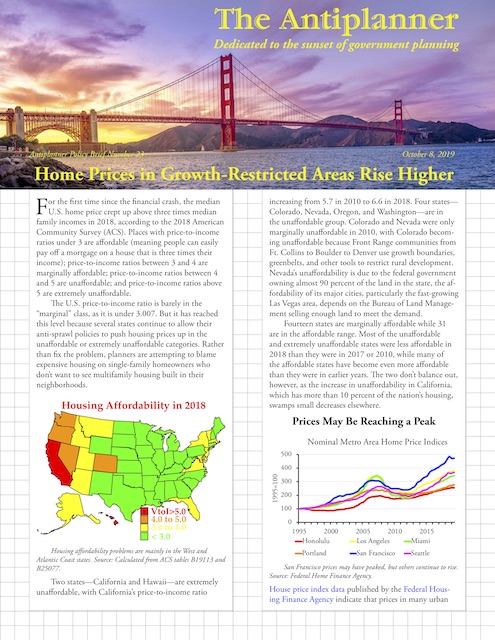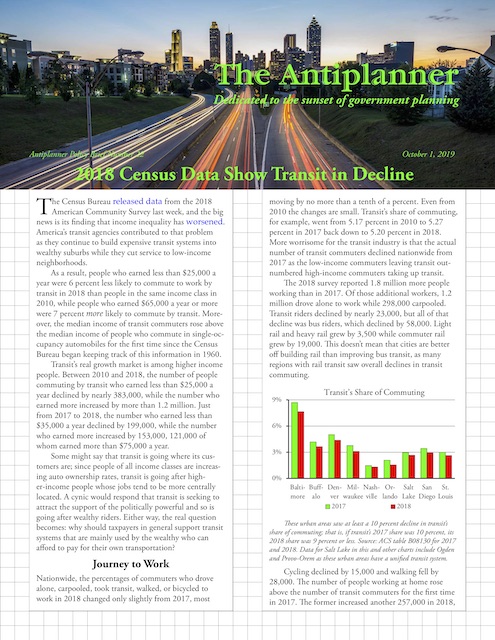For the first time since the financial crash, the median U.S. home price crept up above three times median family incomes in 2018, according to the 2018 American Community Survey (ACS). Places with price-to-income ratios under 3 are affordable (meaning people can easily pay off a mortgage on a house that is three times their income); price-to-income ratios between 3 and 4 are marginally affordable; price-to-income ratios between 4 and 5 are unaffordable; and price-to-income ratios above 5 are extremely unaffordable.

Click image to download a PDF of this four-page policy brief.
The U.S. price-to-income ratio is barely in the “marginal” class, as it is under 3.007. But it has reached this level because several states continue to allow their anti-sprawl policies to push housing prices up in the unaffordable or extremely unaffordable categories. Rather than fix the problem, planners are attempting to blame expensive housing on single-family homeowners who don’t want to see multifamily housing built in their neighborhoods. Continue reading








